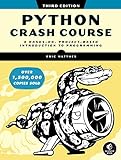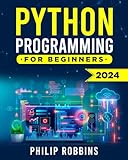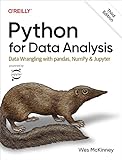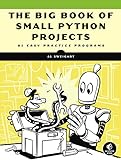To apply a specific function to a pandas dataframe, you can use the ".apply()" method. This method allows you to apply a function to each element in a dataframe or a specific column. Additionally, you can use lambda functions to apply custom functions to your dataframe. Using the ".apply()" method is a powerful way to efficiently manipulate and transform data in your pandas dataframe.
What is the best way to apply a function to a pandas dataframe in parallel?
One of the best ways to apply a function to a pandas DataFrame in parallel is to use the swifter library. Swifter essentially parallelizes any function that can be vectorized, speeding up computation for large DataFrames.
Here is an example of how to use swifter to apply a function to a pandas DataFrame in parallel:
1 2 3 4 5 6 7 8 9 10 11 12 |
import pandas as pd import swifter df = pd.DataFrame({'A': [1, 2, 3, 4, 5]}) def square(x): return x**2 # Apply the function in parallel using swifter df['B'] = df['A'].swifter.apply(square) print(df) |
In this example, the square function is applied to the 'A' column of the DataFrame df using the swifter.apply method. This will run the function in parallel, which can significantly speed up computation for large DataFrames.
Remember to install the swifter library using pip install swifter before using it.
What is the impact of applying functions to missing values in a pandas dataframe?
When applying functions to a pandas dataframe that contains missing values, the impact can vary depending on how the functions handle missing values.
If the function being applied is able to handle missing values (e.g. using the skipna=True parameter), then the function will simply ignore the missing values and continue to operate on the non-missing values.
However, if the function does not handle missing values, then the presence of missing values in the dataframe can lead to unexpected results or errors. In this case, it is important to either remove or fill in missing values before applying the function to prevent any issues.
Overall, the impact of applying functions to missing values in a pandas dataframe depends on how the function handles missing values and whether missing values are properly managed before applying the function.
How to apply a function to each element in a pandas series?
To apply a function to each element in a Pandas Series, you can use the apply() method. Here is how you can do it:
- Define the function that you want to apply to each element in the Series.
1 2 |
def my_function(x): return x * 2 |
- Use the apply() method on the Pandas Series, passing the function as an argument.
1 2 3 4 5 6 7 8 9 |
import pandas as pd # Create a sample Pandas Series data = pd.Series([1, 2, 3, 4, 5]) # Apply the function to each element in the Series result = data.apply(my_function) print(result) |
In this example, the my_function() will be applied to each element in the Series, multiplying each element by 2. The resulting Series will contain the modified values.
You can replace my_function() with any function of your choice to apply to each element in the Series.
What is the best practice for applying functions to time series data in a pandas dataframe?
The best practice for applying functions to time series data in a pandas dataframe is to use the .apply() method along with lambda functions or defined functions.
Here is an example of how to apply a function to a pandas dataframe with time series data:
1 2 3 4 5 6 7 8 9 10 11 12 13 14 15 16 17 18 19 |
import pandas as pd # Create a sample dataframe with time series data data = {'date': ['2022-01-01', '2022-01-02', '2022-01-03'], 'value': [10, 20, 30]} df = pd.DataFrame(data) # Convert 'date' column to datetime format df['date'] = pd.to_datetime(df['date']) # Define a function to calculate the square of a value def square_value(x): return x**2 # Apply the function to the 'value' column using .apply() method df['squared_value'] = df['value'].apply(square_value) # Print the updated dataframe print(df) |
This code snippet creates a sample dataframe with time series data, defines a function square_value to calculate the square of a value, and applies this function to the 'value' column using the .apply() method. The result is a new column 'squared_value' in the dataframe with the squared values of the 'value' column.
Using the .apply() method with functions allows for easy and efficient manipulation of time series data in a pandas dataframe.
How to apply a function to a pandas dataframe and display the results graphically?
You can apply a function to a pandas dataframe using the apply() method and then display the results graphically using matplotlib or seaborn. Here's an example code snippet to demonstrate this:
1 2 3 4 5 6 7 8 9 10 11 12 13 14 15 16 17 18 19 20 |
import pandas as pd import matplotlib.pyplot as plt # Create a sample dataframe data = {'A': [1, 2, 3, 4, 5], 'B': [10, 20, 30, 40, 50]} df = pd.DataFrame(data) # Define a function to apply to the dataframe def square_sum(row): return (row['A'] ** 2) + (row['B'] ** 2) # Apply the function to the dataframe df['result'] = df.apply(square_sum, axis=1) # Display the results graphically plt.bar(df.index, df['result']) plt.xlabel('Index') plt.ylabel('Result') plt.title('Result of Function Applied to DataFrame') plt.show() |
In this example, we first create a sample dataframe with columns 'A' and 'B'. We then define a function square_sum() which calculates the sum of squares of values in columns 'A' and 'B' for each row. We apply this function to the dataframe using the apply() method, setting axis=1 to apply the function row-wise.
Finally, we display the results graphically using a bar plot with index on the x-axis and the result of the function on the y-axis. You can customize the plot further based on your requirements.









